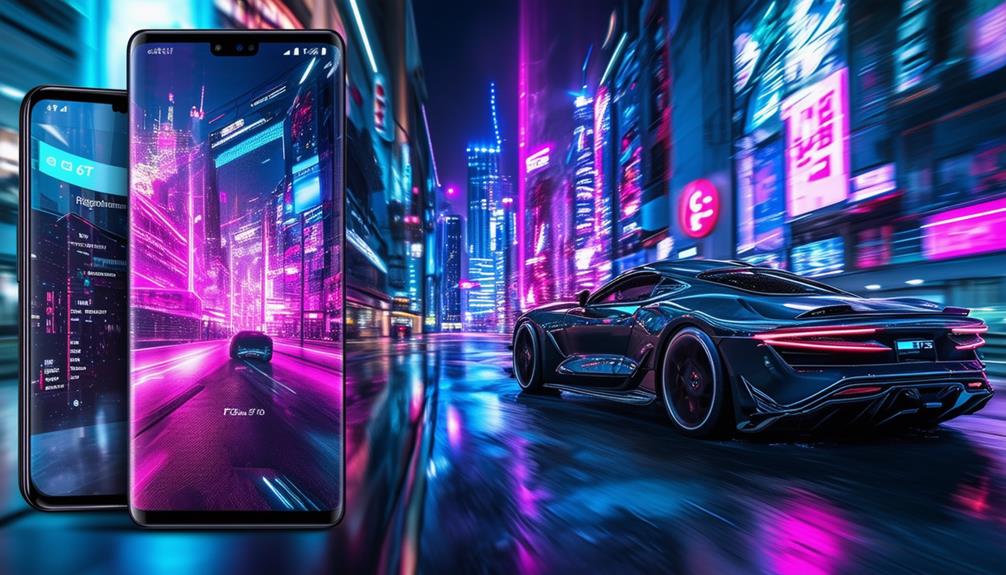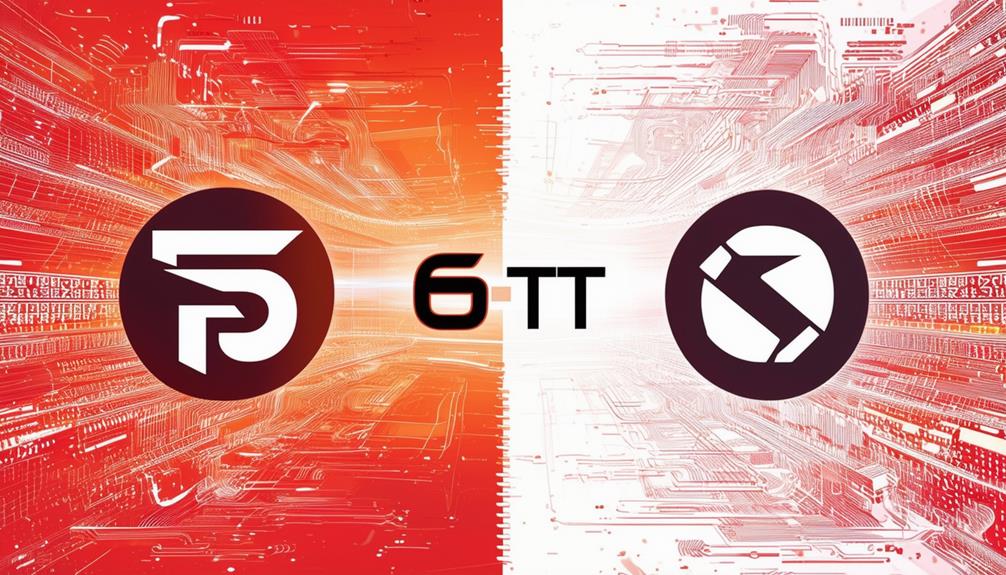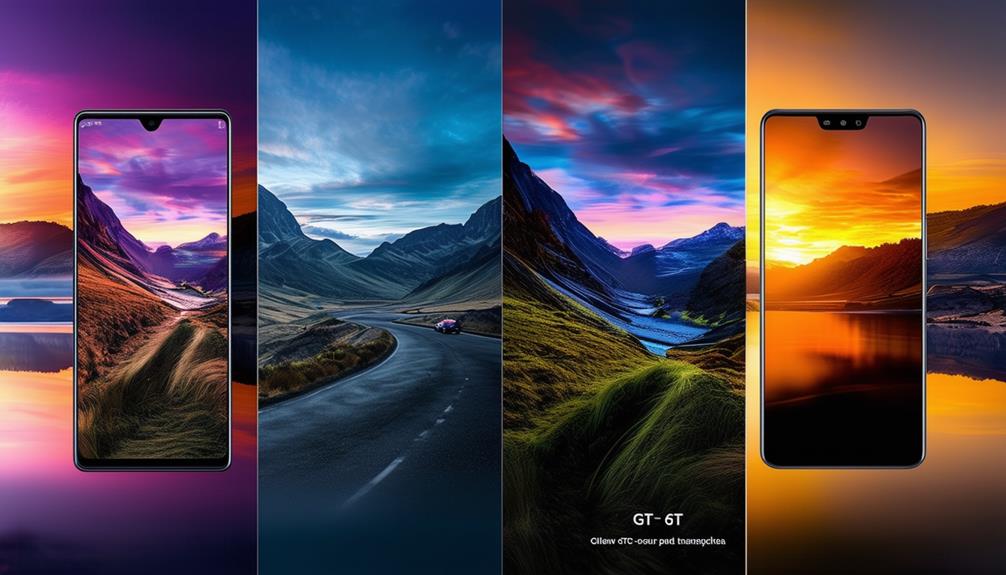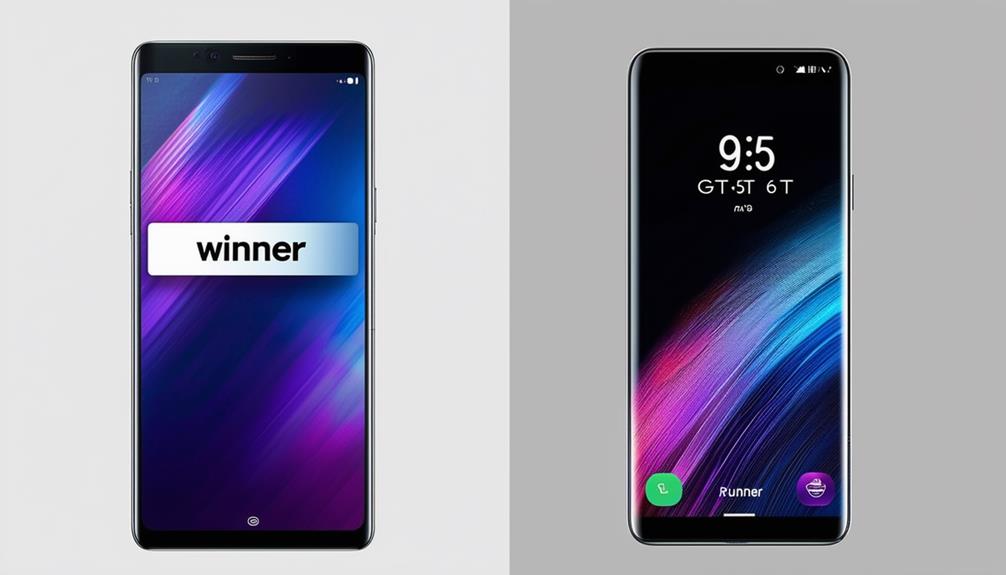The battle for supremacy has begun, as two titans of the smartphone world, the POCO F6 and Realme GT 6T, go head-to-head in a clash of features, performance, and design. On one hand, the F6 boasts impressive gaming credentials, while the GT 6T excels in camera prowess. But which one will reign supreme? As we dissect the intricacies of each device, the question remains: will the F6's processing power or the GT 6T's photographic prowess win out? The answer lies in the details, and it's time to examine the key areas where these beasts will duke it out in the domain.
Key Takeaways
- POCO F6 has a more understated design, while Realme GT 6T has a flashy aesthetic, with the F6 having better fingerprint resistance.
- POCO F6 leads in gaming performance, offering a better GPU with ray tracing support and higher FPS in gaming benchmarks.
- Both phones boast stunning 1.5K 120Hz AMOLED panels, but Realme GT 6T's LTPO display technology contributes to improved battery life.
- Realme GT 6T excels in ultra-wide shots and low-light photography, producing better colors, while POCO F6 takes more natural photos in daylight.
- POCO F6 has a slight edge in gaming, but Realme GT 6T has better temperature control during gaming, preventing overheating.
Design, Build, and Display
When it comes to design, build, and display, the POCO F6 and Realme GT 6T exhibit distinct personalities, with the former boasting an understated functional look and the latter flaunting a flashy aesthetic. The Realme GT 6T's back panel is a fingerprint magnet, whereas the POCO F6's material quality is more impressive, offering better fingerprint resistance. Both phones feature plastic sides and back, with standard buttons and ports, except for the headphone jack. The POCO F6's slim and lightweight design provides a better in-hand feel. Additionally, the Realme GT 6T has an IP65 rating, while the POCO F6 has an IP64 rating. Both phones boast stunning 1.5K 120Hz AMOLED panels, with the Realme GT 6T's LTPO panel contributing to better battery life.
Performance and Gaming

Powered by powerful processors, the POCO F6 and Realme GT 6T deliver exceptional performance, with the former featuring a Snapdragon 8s Gen 3 chip and the latter boasting a Snapdragon 7+ Gen 3 processor. In the domain of gaming, the POCO F6 takes the lead, offering a better GPU with ray tracing support. This results in higher frame rates and a smoother gaming experience. The POCO F6 also outperforms the Realme GT 6T in gaming benchmarks, achieving higher FPS in games like COD Warzone and Genshin. However, the Realme GT 6T has better temperature control during gaming, which helps to prevent overheating. Overall, both phones offer impressive performance, but the POCO F6 has a slight edge in the sphere of gaming.
Software and Features

Software and features-wise, the POCO F6 and Realme GT 6T take distinctly different approaches, with the former running on HyperOS and the latter on RealmeUI 5.0. While both operating systems promise 3 OS updates and 4 years of security patches, they differ in aspects of customization options and bloatware concerns.
- HyperOS on POCO F6 offers more AI-driven features, such as image expansion and magic eraser.
- RealmeUI 5.0 on Realme GT 6T provides smoother animations and a more responsive UI.
- POCO F6 has 14 pre-installed apps, raising bloatware concerns, whereas Realme GT 6T has only 6.
- Customization options on HyperOS are more limited compared to RealmeUI 5.0.
- Both phones have distinct feature sets, making it essential to weigh their pros and cons before making a purchase decision.
Camera and Battery Life

While the software and features of the POCO F6 and Realme GT 6T have their distinct strengths and weaknesses, the camera and battery life of these devices are also vital aspects to weigh in the decision-making process. In respect of camera performance, both phones have similar rear camera specs, but the POCO F6 takes more natural photos in daylight, while the Realme GT 6T oversaturates colors. However, the Realme GT 6T excels in ultra-wide shots and low-light photography, producing better colors. When it comes to battery life, the Realme GT 6T has a larger 5500mAh battery, providing a slight edge over the POCO F6's 5000mAh battery. For users who prioritize photo editing and capturing excellent low-light shots, the camera capabilities of these devices will be a pivotal consideration.
Display and Visuals

Equipped with stunning 1.5K 120Hz AMOLED panels, both the POCO F6 and Realme GT 6T offer exceptional visual experiences, with the Realme GT 6T's LTPO display technology contributing to improved battery life.
- Both phones boast excellent color accuracy and HDR support, ensuring vibrant and detailed visuals.
- The Realme GT 6T's display appears brighter than the POCO F6's, making it more suitable for outdoor use.
- The POCO F6, however, offers a more immersive movie-watching experience with Dolby Vision support in Netflix.
- Both phones feature Always-On Display (AOD) capabilities, although the Realme GT 6T's implementation is more comprehensive.
- Overall, both devices provide exceptional display quality, catering to different user preferences.
Power and Performance

The processing prowess of both devices is remarkable, with the Realme GT 6T leveraging the Snapdragon 7+ Gen 3 processor and the POCO F6 powered by the Snapdragon 8s Gen 3, promising exceptional performance and gaming capabilities in the domain. The Snapdragon 8s Gen 3 in the POCO F6 offers better GPU performance with ray tracing support, making it ideal for gaming enthusiasts. Both devices excel in power optimization, with the Realme GT 6T's thermal management facilitating efficient heat dissipation during intense gaming sessions. The UFS 3.1 storage in the Realme GT 6T and UFS 4.0 storage in the POCO F6 guarantee seamless performance and data transfer. Overall, both devices deliver exceptional performance, making them suitable for demanding tasks and gaming.
Final Verdict and Decision

Ultimately, the decision between the POCO F6 and Realme GT 6T hinges on individual priorities, with each device offering unique strengths and weaknesses that cater to distinct user preferences.
When weighing the value proposition of each device, consider the following key factors:
- Display quality and features (LTPO panel, brightness, and protection)
- Performance and gaming capabilities (processor, GPU, and storage)
- Camera performance and features (rear and front camera specs, image quality)
- Battery life and charging capabilities
- Software and feature set (HyperOS vs domain UI, updates, and pre-installed apps)
Frequently Asked Questions
Can I Use These Phones in Extreme Temperatures?
When operating in extreme temperatures, it's essential to consider thermal limits and climate durability. Both phones have IP ratings, but thermal performance varies; POCO F6 tends to heat up, while Realme GT 6T has better temperature control during gaming.
Are These Phones Compatible With Wireless Charging?
Like a magnet attracting metal, the allure of convenience draws us to wireless charging, but do these phones support it? Unfortunately, neither POCO F6 nor Realme GT 6T offers wireless charging capabilities, forcing users to rely on traditional charging methods, adhering to standard charging speed standards, and incompatible with wireless charging pads.
Do These Phones Support 5G Connectivity?
Both POCO F6 and Realme GT 6T support 5G connectivity, covering a range of frequency bands, including n1, n3, n5, n7, n8, and n28, ensuring reliable connectivity despite network congestion.
Can I Expand the Storage Capacity of These Phones?
Neither POCO F6 nor Realme GT 6T offers a microSD card slot, limiting storage expansion options; however, users can employ File Organization and Storage Optimization techniques to maximize internal storage capacity.
Are These Phones Water-Resistant in Deep Water?
Regarding water resistance, both phones have IP ratings, but they are not designed for deep-water submersion. Realme GT 6T's IP65 rating can withstand splashes, while POCO F6's IP64 rating offers limited protection against water pressure, but neither is suitable for ocean testing or prolonged underwater exposure.
Conclusion
In the domain of smartphones, two titans clash, each wielding distinct strengths. The POCO F6, a paragon of gaming prowess, and the Realme GT 6T, a virtuoso of camera capabilities, engage in a battle of supremacy. As the dust settles, the choice between these two behemoths ultimately hinges on individual priorities, echoing the ancient adage, 'Know thyself.'
